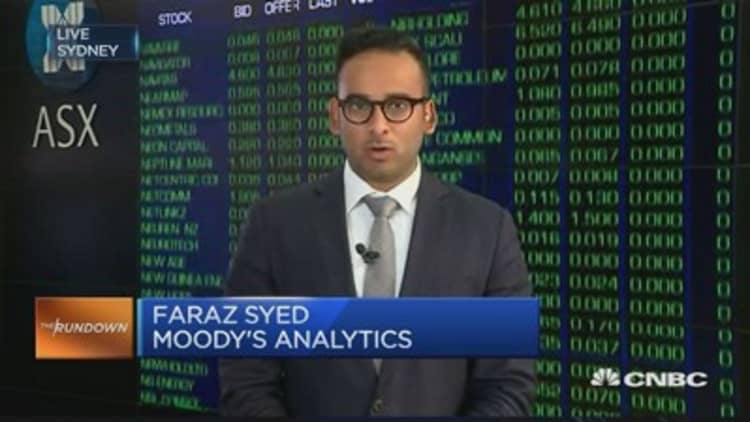
Economists may be have fretted over how demonetization would hit India's economic growth, but the subcontinent's central bank is focused more on its old foe, inflation.
The Reserve Bank of India on Wednesday kept interest rates on hold at its policy meeting on Wednesday. That surprised the market, which had leaned heavily toward expecting a cut, in part because the government's cash curbs had weighed on economic growth.
The demonetization program, which started in November, removed 86 percent of India's currency in circulation by recalling existing 500 ($7.47) and 1,000 ($14.93) rupee notes and later gradually replacing them with newly printed 500 and 2,000 rupee notes.
With much of India's economic activity still cash-based, that had a chilling effect on business.
But RBI Governor Urjit Patel called the effects of demonetization "transitory" and instead pointed to concerns that a "fire sale" in perishable foods was distorting what could be a worrying outlook for inflation.
Goldman Sachs said the move, while it surprised markets, was in line with its expectations.
"RBI's relatively more hawkish tone at this meeting and their goalpost of achieving 4% inflation over the medium term support our view that there are no further rate cuts likely in this cycle,"
Goldman said in a note on Thursday. "We expect headline inflation to hover at the upper end of RBI's target band. Further, abundant liquidity following demonetization, easing lending rates, demonetization's potentially transient impact on growth, the global reflationary environment and higher U.S. bond yields, are all likely to keep the RBI on hold."
Other analysts pointed to similar factors.
Faraz Syed, an associate economist at Moody's Analytics, pointed to several reasons for the RBI's surprising decision to keep interest rates steady.
"One of the main reasons was sticky inflation, or core prices. They've been relatively high compared to headline inflation," Syed told CNBC's "The Rundown" on Thursday. "The other reason is perhaps global developments, particularly increases in U.S. interest rates that are expected this year. The RBI probably has memories of 2013 in India where capital exited emerging markets at a rapid pace."
In 2013, funds rapidly exited emerging markets, causing a global market rout, after the U.S. Federal Reserve first broached the idea that it would shortly begin tapering asset purchases under its now-ended quantitative easing program.
Syed also pointed to a reason that demonetization might lay a less cold hand than expected on the economy.
"Because of demonetization , lending rates have come down. As well, bank deposits have increased," he said. "If those lower lending rates can be translated into higher investment, then there's certainly going to be less risk from demonetization."
Others also noted that demonetization wasn't enough of a reason for a rate cut.
"Subsequent data have shown that, while the economy has taken a hit, the impact has not been catastrophic," Shilan Shah, an India economist at Capital Economics, said in a note on Wednesday. He had expected that the RBI would stay on hold.
"It signals the end of the loosening cycle. Looking ahead, with inflation set to accelerate, we continue to think that rate hikes will come onto the agenda much sooner than is generally anticipated," Shah said, pointing to rising inflation expectations ahead even though consumer price inflation was currently "comfortably" within the RBI's target zone.
"Demonetisation itself is likely to be inflationary over the longer term if it leads to supply disruptions even as demand recovers. For example, some farmers in rural areas have reportedly been unable to purchase seeds and/or fertiliser. This could lead to smaller harvests later in the year, which in turn would boost prices," Shah said, adding that global oil prices were also recovering, suggesting transport inflation could rise.
But while some economists were pointing to expectations that the RBI was signalling the end of its rate-cut cycle, Moody's Syed was uncertain.
"It will also depend on the monsoon season that's coming up. Monsoon season tends to drive India's food inflation," Syed said. "If we see a good monsoon season, I think food prices will come down even lower than they are at the moment and therefore I think RBI will be cutting interest rates in the second half of the year."
—By CNBC.Com's Leslie Shaffer; Follow her on Twitter @LeslieShaffer1


